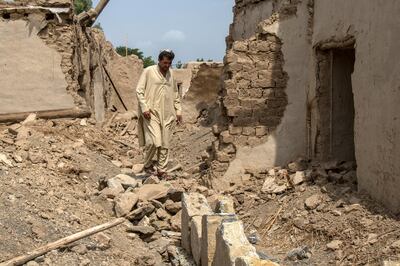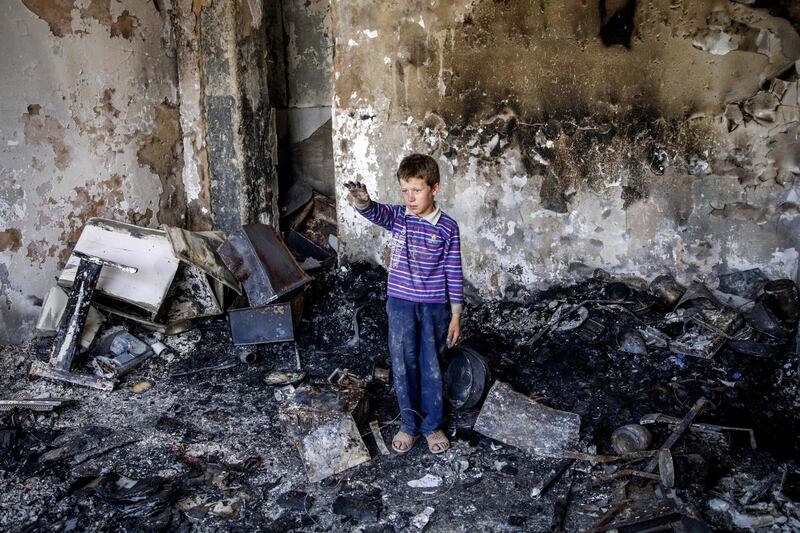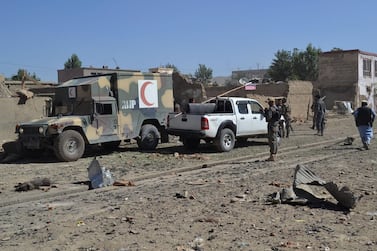Almost a quarter of Afghanistan’s casualties so far this year have been children, a report found, as officials and aid agencies called on all parties to preserve civilian life.
The report by the UN, released on Tuesday, found that 327 of the 1,366 civilian deaths and 880 of the 2,446 people wounded in the first half of 2019 were children.
While it found the casualty rate was 27 per cent lower so far this year than the same period last year, it rose sharply between April and June.
The UN welcomed the overall decline but said it "continues to regard the level of harm done to civilians as shocking and unacceptable".
The publication coincides with US Secretary General Antonio Guterres’s annual report to the Security Council on Children and Armed Conflict, which found a record number of children harmed by armed conflict worldwide last year.
More than 12,000 children were killed and injured globally, with Afghanistan topping the casualty list.
The report found an “alarming increase” in the number of breaches by government and international forces compared to 2017.
Mr Guterres’s annual list of countries that committed serious abuses against minors in war is nearly the same as last year, drawing criticising from rights groups.
Jo Becker, children’s rights advocacy director at Human Rights Watch, expressed concern that US-led international forces in Afghanistan, and the Afghan National Army, were left off his “list of shame.”
The human rights chief for the UN mission in Afghanistan, Richard Bennett, said “only a determined effort to avoid civilian harm will decrease the suffering of civilian Afghans”.
Pro-government forces – including the Afghan army and the US military – this year accounted for more deaths than the Taliban, ISIS and other militant groups, killing 717 civilians – a 31 per cent increase on last year.
Most of the civilian casualties were the result of air strikes.
Opposition and insurgent groups killed 306 people.
The Taliban, who announced their fighting season this year in April, and the government have raised the stakes in the now almost two-decade-long war.
"The Ministry of Defence has turned its position from defensive to offensive," Fawad Aman, the ministry's spokesman, told The National. "We have increased our raids and air strikes against the Taliban and other terrorist groups."
Afghanistan's presidential election season kicked off on Monday with an attack on the office of President Ashraf Ghani's running mate and former spy chief, Amrullah Saleh.
The attack killed at least 20 people and injured dozens, including Mr Saleh, in an hours-long gun battle after a suicide bombing.
October’s parliamentary election was the bloodiest election in years, the UN said. It recorded 56 killed and 379 wounded, putting the casualty toll higher than the past four elections.
This month, participants at the Intra-Afghan Dialogue in Doha agreed to pledge that all parties work to reduce civilian casualties to zero, although there was little agreement on how to do this.
“Everyone heard the message loud and clear,” said the UN’s Secretary-General’s special yepresentative for Afghanistan Tadamichi Yamamoto. “We urge all parties to heed this imperative.”
While the US and the Taliban continue their peace negotiations, air strikes have increased across Afghanistan.
They have killed at least 363 people and injured 156 – a 39 per cent increase in casualties, with US forces launching by far most air raids.
Badshah Dullah, 40, stood amid the shattered rubble of his house in Gurboz Sarah in Afghanistan’s Khost province.

His house was hit by a drone strike 15 years ago, but he said none of his family members were affiliated with any opposition group.
It was an accident but not much has changed since, Mr Dullah said.
“The war has become worse," he said. "At night I still hear the drones and the helicopters. They rob me of my sleep. I’m constantly afraid.”
The family still has not raised enough funds to repair their home.
In the capital, Kabul, people said they lived in fear every day.
“Of course I worry,” said Mariam Sediqi, 16, a high school pupil living in a busy area in the middle of the city.
“There’s violence every day, including many attacks. Many of them are small so you won’t even read about them.”
After two decades, war-weary Afghans are looking for change.
“I’m waiting for the day when this war is finally over,” Mr Dullah said.






